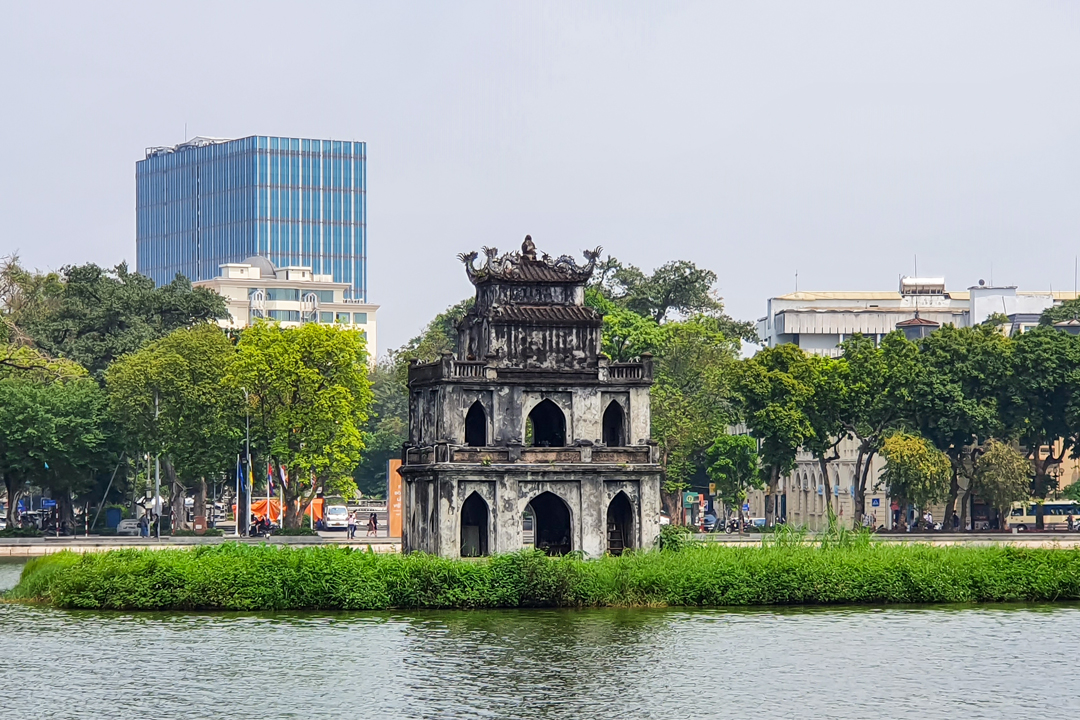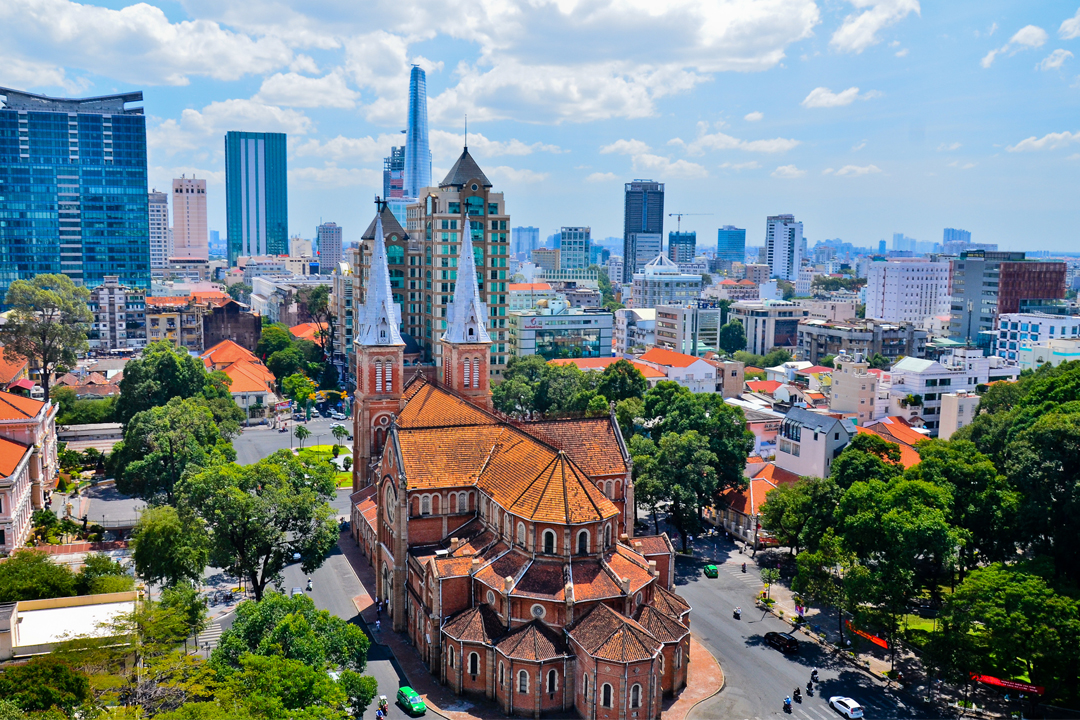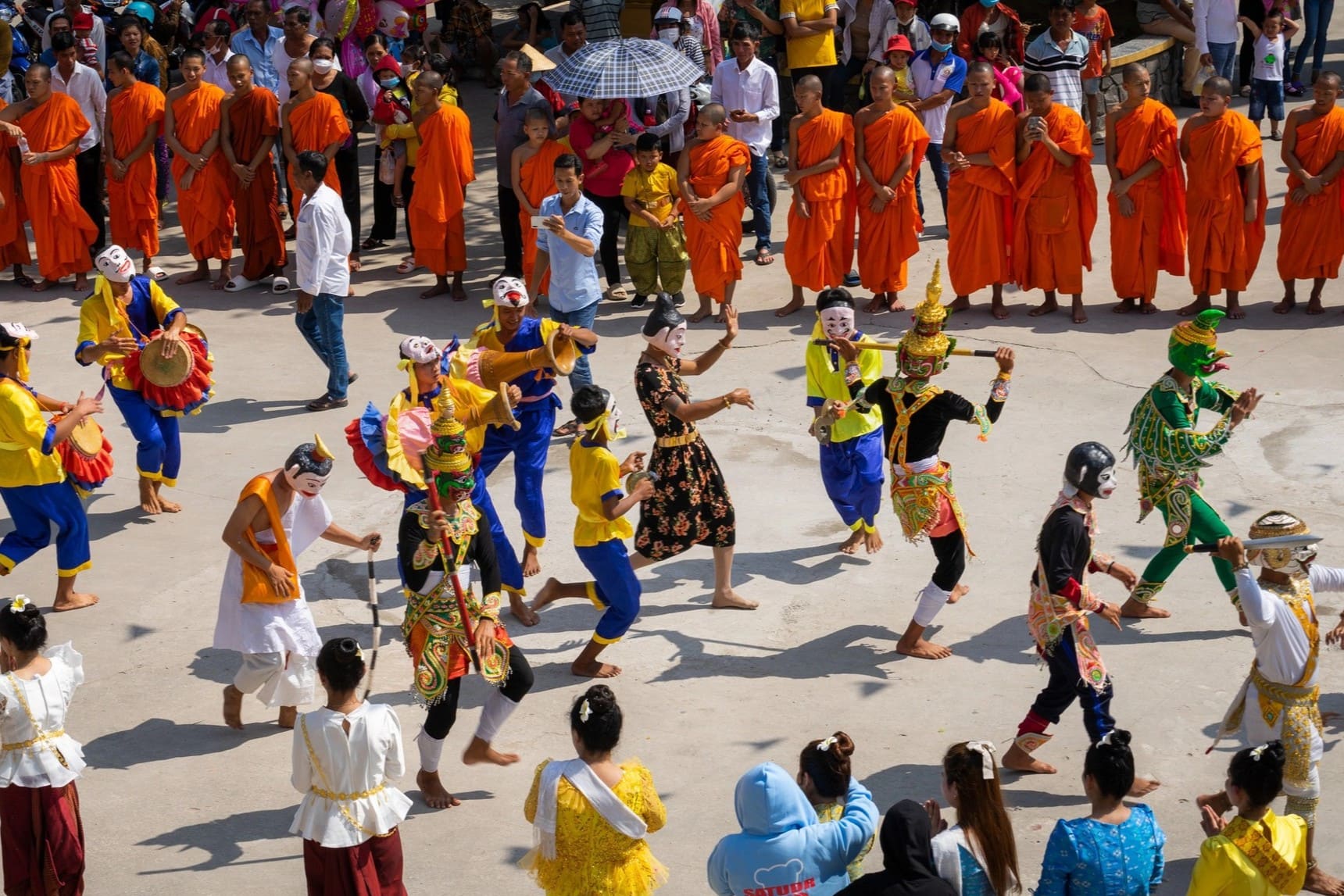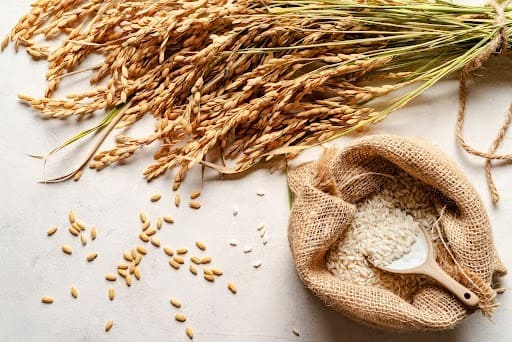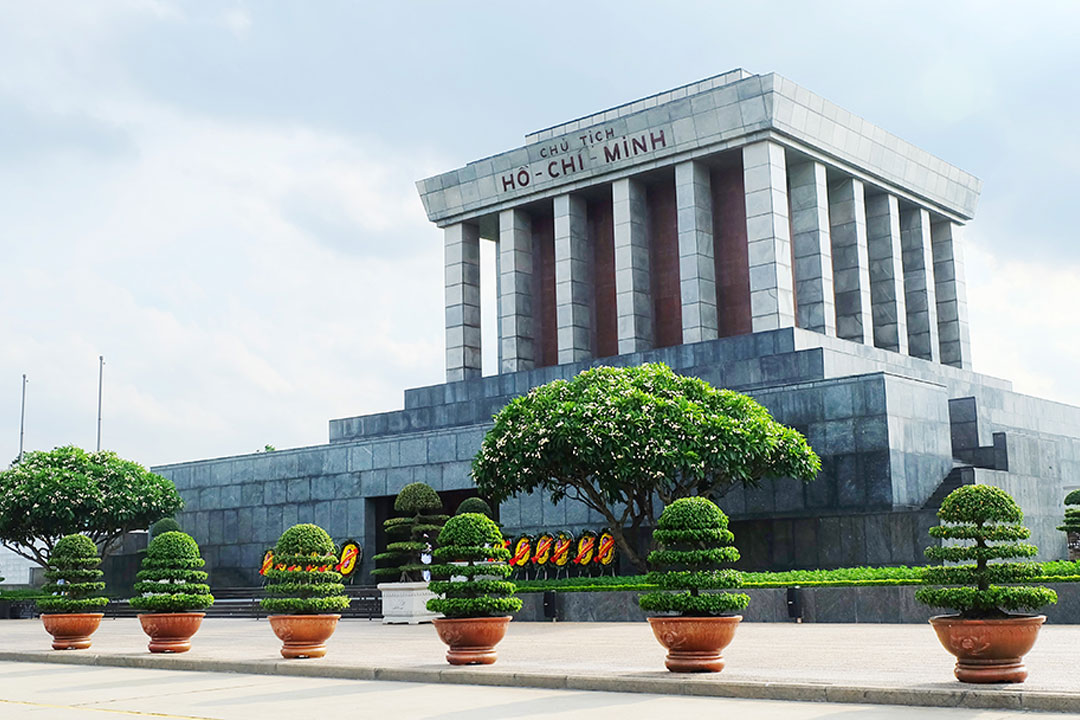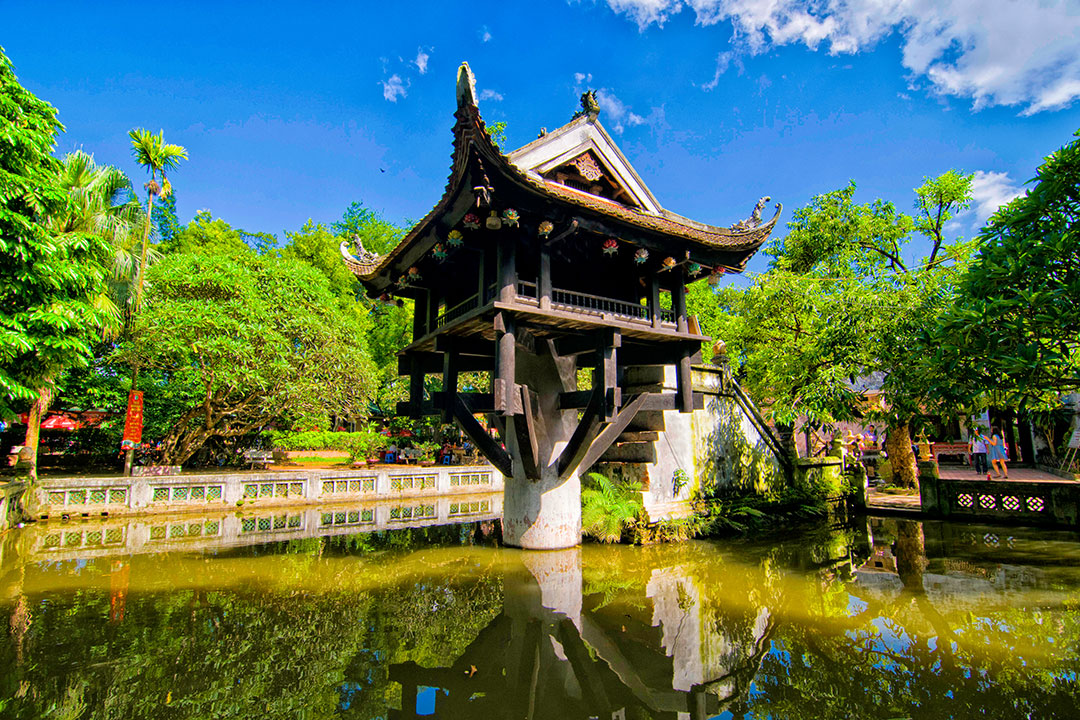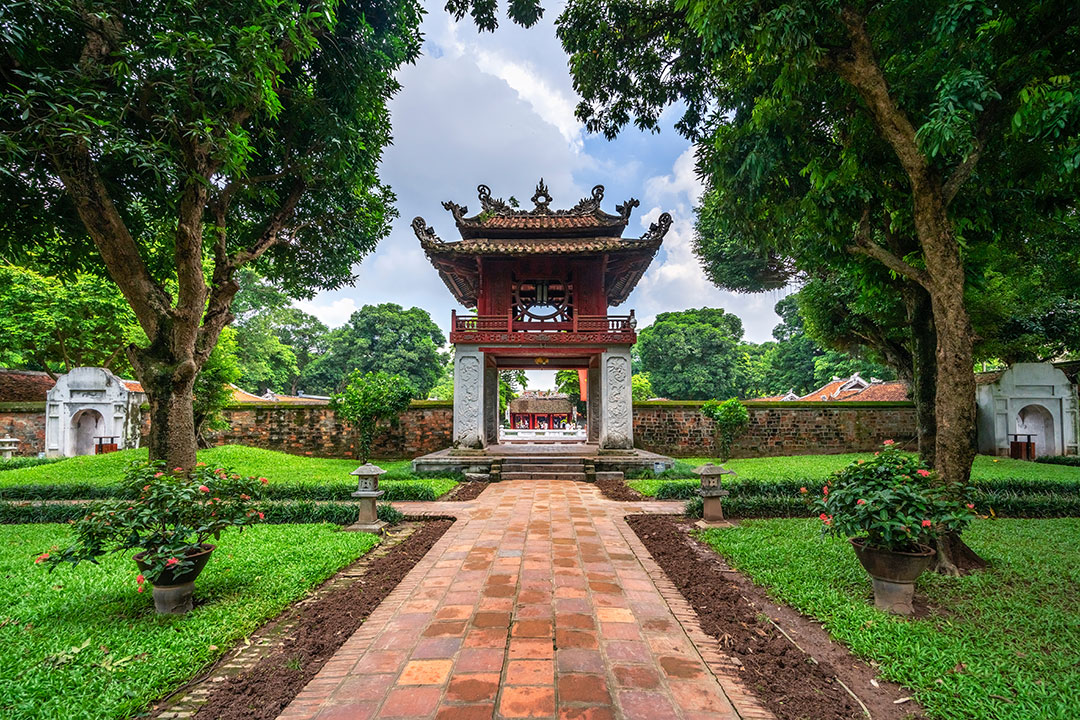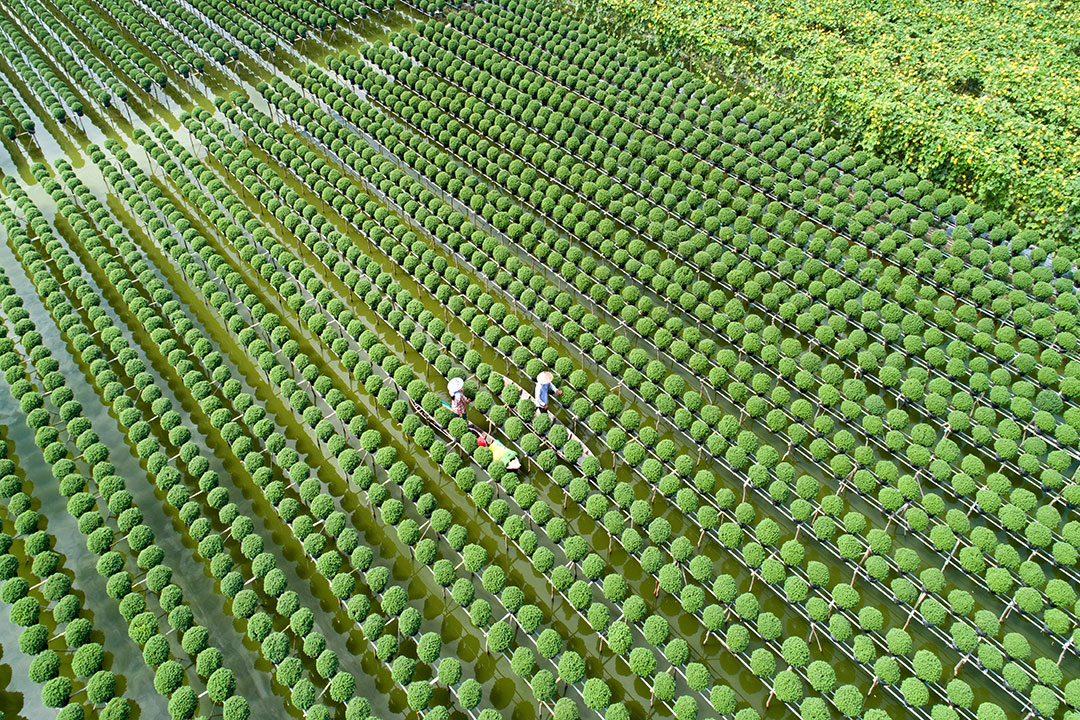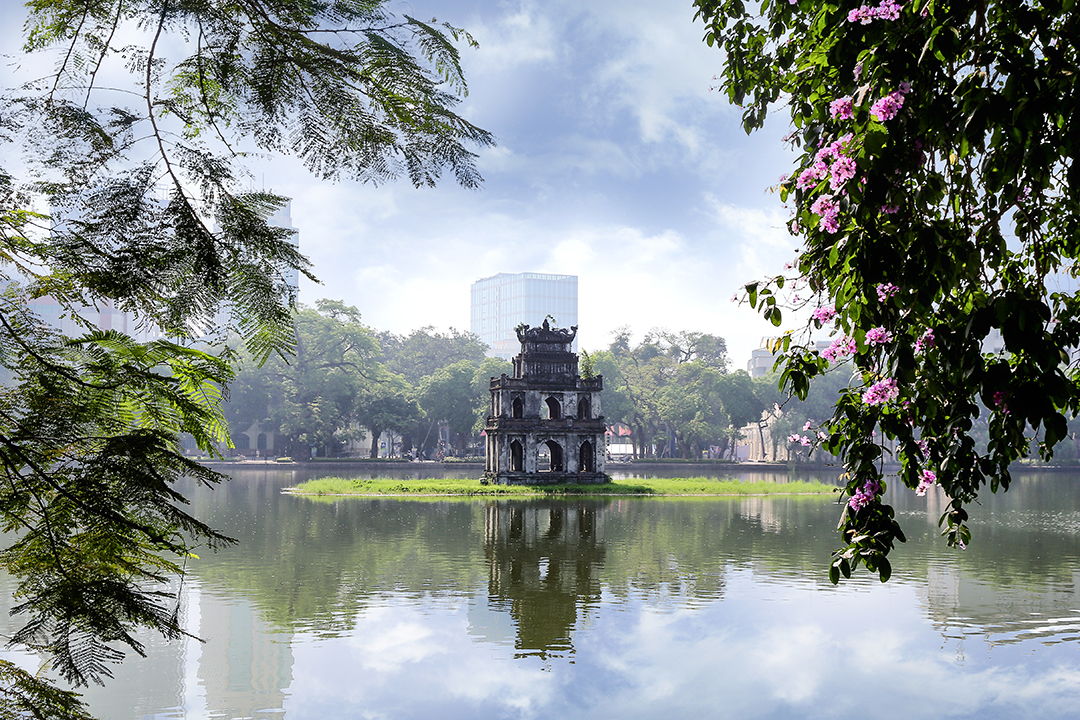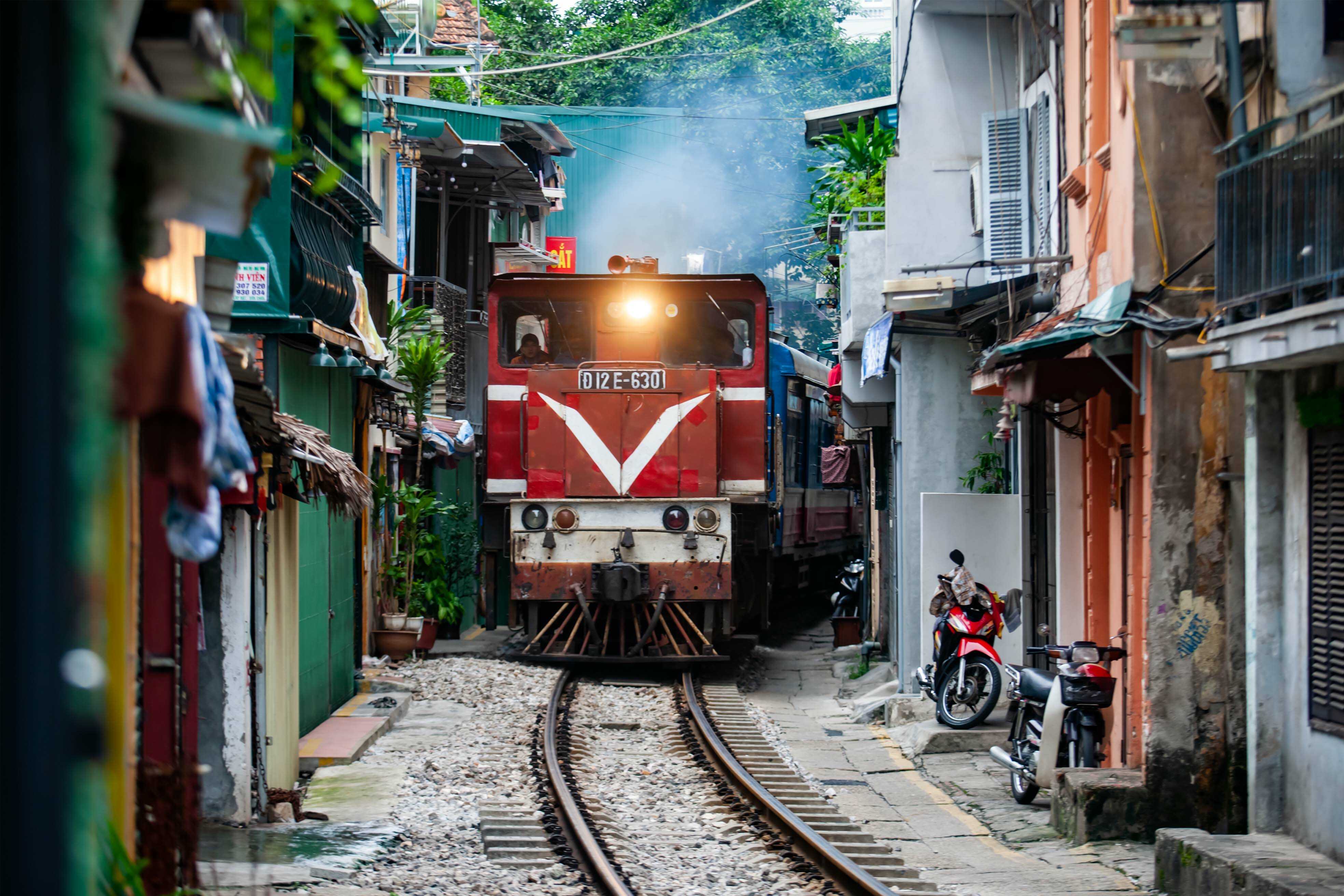Vietnam Museum Of Ethnology: Location, Opening Hours, Admission Fees, Architecture & Travel Guide
For anyone curious about the rich tapestry of Vietnam's cultural heritage, the Vietnam Museum of Ethnology offers a vivid journey through the lives and traditions of its diverse ethnic groups. Located in the heart of Hanoi, this museum acts as both a repository and storyteller for more than 50 ethnic communities across the nation. Beyond being a mere collection of artifacts, it provides an illuminating perspective on Vietnam's multifaceted history and identity.
Where is the Vietnam Museum of Ethnology?
Location: No. 1 Nguyen Van Huyen Street, Ngoc Ha Ward, Hanoi (about 7–8 km from central Hanoi)
The Vietnam Museum of Ethnology (VME), known locally as "Bao tang Dan toc hoc Viet Nam", occupies a strategic position in the quieter former Nghia Do Ward, Cau Giay District. This cultural treasure offers tourists a peaceful retreat from the energetic pace of downtown Hanoi.
The museum's somewhat peripheral location was intentionally chosen. It provides ample space for the expansive outdoor exhibition area. In this space, life-sized traditional houses representing various ethnic communities have been meticulously reconstructed. This spacious setting allows the VME to fulfill a dual mission. It serves as both a renowned research center and a public museum. The museum offers an immersive educational experience about Vietnam's incredible ethnic diversity.
The museum's distinctive location reflects its significance in Vietnam's cultural landscape. Widely acknowledged as the most comprehensive and informative museum dedicated to Vietnam's 54 ethnic groups, the VME's architectural design itself symbolizes the country's cultural diversity. Its main exhibition building features a drum-shaped structure, paying homage to the Dong Son drums that hold profound cultural significance throughout Vietnam's history.
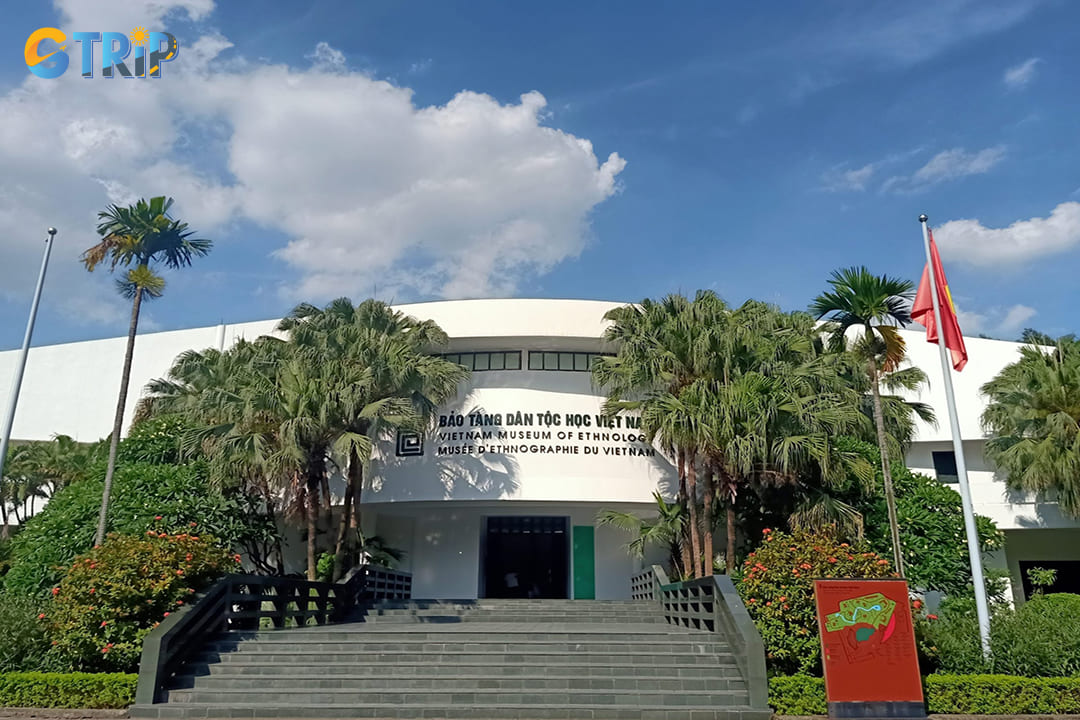
Vietnam Museum of Ethnology serves as both a renowned research center and a public museum
Information of the Vietnam Museum of Ethnology
Planning your visit to the Vietnam Museum of Ethnology requires understanding its schedule and pricing structure. The museum welcomes visitors almost daily, with strategic hours designed to accommodate both early birds and afternoon explorers. Let's dive into everything you need to know before your cultural journey begins.
Opening hours
The Vietnam Museum of Ethnology operates from Tuesday through Sunday, opening its doors at 8:30 AM and closing at 5:30 PM. You should note that the museum remains closed every Monday for maintenance and during Lunar New Year celebrations. Many travelers recommend arriving before noon to enjoy the exhibits without afternoon crowds.
Admission fee and ticket information
General admission to this cultural treasure costs 40,000 VND per person (approximately $1.70 USD), making it an affordable attraction for budget-conscious travelers. The museum offers generous discounts of 50% off regular admission for senior citizens and people with disabilities. This accessibility initiative ensures cultural education remains available to diverse visitor groups.
Several categories of visitors qualify for free admission, enhancing the museum's commitment to cultural accessibility:
- Children under 6 years old
- People with significant disabilities
- Museum membership cardholders
- ICOM (International Council of Museums) cardholders
- Journalists with valid press credentials
- Representatives of museum sponsors
Photography enthusiasts should prepare for additional fees if they wish to capture the exhibits. Standard cameras incur a fee of 50,000 VND per device, while professional photography equipment requires a permit costing 500,000 VND. These fees help preserve the artifacts and support ongoing conservation efforts.
For a richer cultural experience, guided tours offer valuable context and stories behind the exhibits:
| Guide language | Indoor only | Outdoor only | Both areas |
|---|---|---|---|
| Vietnamese | 50,000 VND | 50,000 VND | 100,000 VND |
| English/French | 100,000 VND | Not specified | Not specified |
Small group experiences cater to travelers seeking more personalized attention, with options available for groups of up to eight people. These intimate tours allow for questions and deeper exploration of specific ethnic minority cultures. Guides often share stories and cultural contexts that aren't found on information placards.
Tourists planning weekend trips should arrive early, as the museum frequently hosts special cultural performances on Saturdays and Sundays. These demonstrations of traditional music, dance, and crafts are typically included with standard admission, providing exceptional value for cultural enthusiasts.
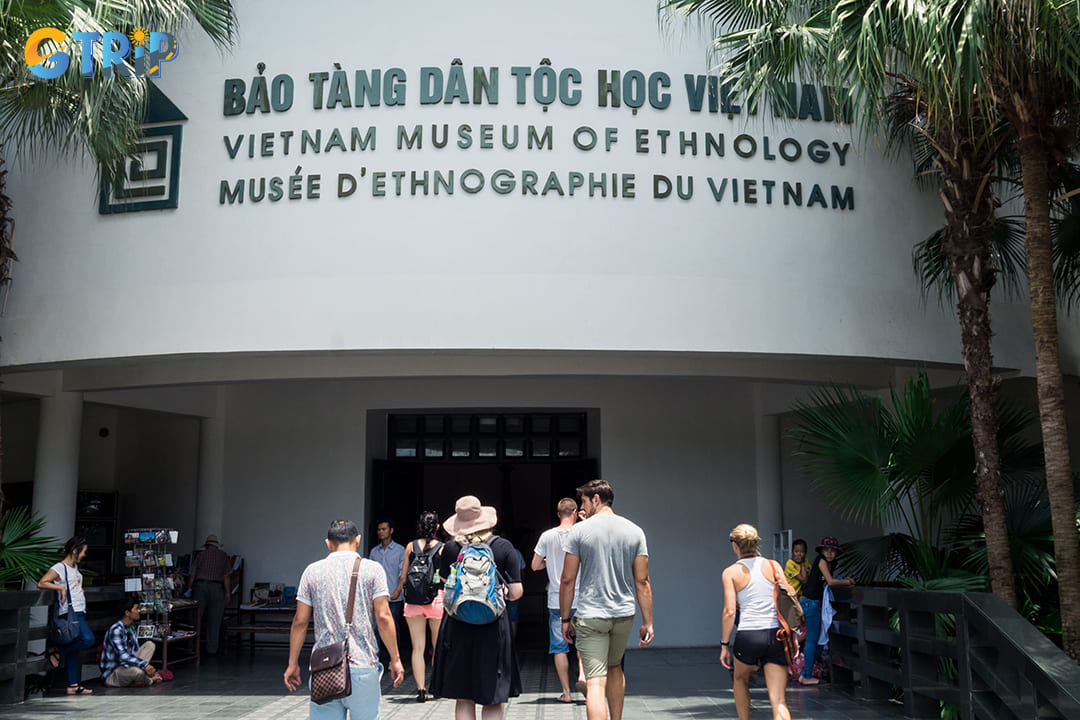
The museum welcomes visitors almost daily, with strategic hours designed to accommodate both early birds and afternoon explorers
The Vietnam Museum of Ethnology's history
The Vietnam Museum of Ethnology stands as a testament to the nation's commitment to preserving its rich cultural heritage. The concept for this important cultural institution first emerged on December 14, 1987, when the proposal was officially submitted to establish a museum dedicated to Vietnam's diverse ethnic groups. This visionary project aimed to create a space that would showcase and celebrate the country's cultural diversity.
The construction of the museum began shortly after its proposal in 1987, with building work continuing through to 1995. This eight-year construction period allowed for careful planning and implementation of the museum's distinctive architectural design. The development involved Vietnamese experts and international consultants to ensure world-class standards while honoring Vietnamese traditions.
The official establishment of the museum came on October 24, 1995, through a formal decision issued by the Prime Minister of Vietnam. This milestone marked the legal recognition of the institution and set the framework for its operations. The decision underscored the national importance of the project and its alignment with Vietnam's cultural preservation goals.
On November 12, 1997, the Vietnam Museum of Ethnology celebrated its grand inauguration with a prestigious ceremony that coincided with an international summit being held in Hanoi. The museum was established with several key purposes that continue to guide its operations today:
- Research and document the cultural practices of Vietnam's 54 ethnic groups
- Collect and preserve authentic artifacts representing diverse cultural heritage
- Create comprehensive exhibitions that educate tourists about ethnic diversity
- Promote understanding and appreciation of Vietnam's multicultural identity
- Serve as a center for the academic study of ethnology and anthropology
Since its opening, the Vietnam Museum of Ethnology has evolved into one of the country's most significant cultural institutions. The development involved Vietnamese experts and international consultants to ensure world-class standards while honoring Vietnamese traditions. The museum's establishment reflects Vietnam's commitment to honoring its diverse heritage while moving confidently into the future.

The Vietnam Museum of Ethnology stands as a testament to the nation's commitment to preserving its rich cultural heritage
The architecture of the Vietnam Museum of Ethnology
The Vietnam Museum of Ethnology boasts an impressive architectural design that harmoniously blends traditional cultural elements with modern museum functionality. Spread across nearly 4.5 hectares, the museum's architecture itself tells a story of Vietnam's diverse ethnic heritage. The complex features three distinct display areas, each with unique design characteristics that complement the cultural artifacts housed within. These architectural spaces were carefully designed to create an immersive experience for tourists while preserving and showcasing Vietnam's rich ethnic diversity.
Bronze Drum Building
The Bronze Drum Building stands as the museum's iconic main structure, instantly recognizable by its distinctive shape. It is inspired by the ancient Dong Son bronze drums, artifacts central to many Vietnamese ethnic cultures. Designed by architect Ha Duc Linh, himself from the Tay ethnic group, this cultural connection ensures authenticity in the building's concept and execution. The interior design, crafted by French architect Veronique Dollfus, creates a seamless blend of Vietnamese tradition and modern museum standards.
This impressive structure spans two floors, covering over 2,000 square meters of exhibition space. Since its opening on November 13, 1997, the Bronze Drum Building has housed the museum's permanent indoor exhibition. Here, you can explore comprehensive displays focusing on:
- Traditional clothing and textiles from various ethnic communities
- Ritual objects and ceremonial artifacts
- Agricultural and crafting tools reflecting daily life
- Household items showing domestic customs and practices
- Religious and spiritual items representing diverse belief systems

The Bronze Drum Building stands as the museum's iconic main structure, instantly recognizable by its distinctive shape
Kite Building
The Kite Building presents a striking architectural contrast with its modern design inspired by traditional Vietnamese kites, symbols of cultural festivities and artistic expression. This four-story structure began construction in June 2007 and officially opened in late 2013, representing the museum's commitment to expanding its cultural presentation.
Unlike the more traditional Bronze Drum Building, the Kite Building serves dynamic purposes:
- First floor: Reception area and temporary exhibition space
- Second floor: Dedicated to rotating exhibitions highlighting specific ethnic cultures
- Third floor: Interactive educational areas and workshop spaces
- Fourth floor: Southeast Asian cultural galleries connecting Vietnam to the broader region
The building's contemporary design features large glass panels that flood the interior with natural light. This creates an airy atmosphere that complements its role hosting educational programs, cultural workshops, and special exhibitions that change throughout the year.
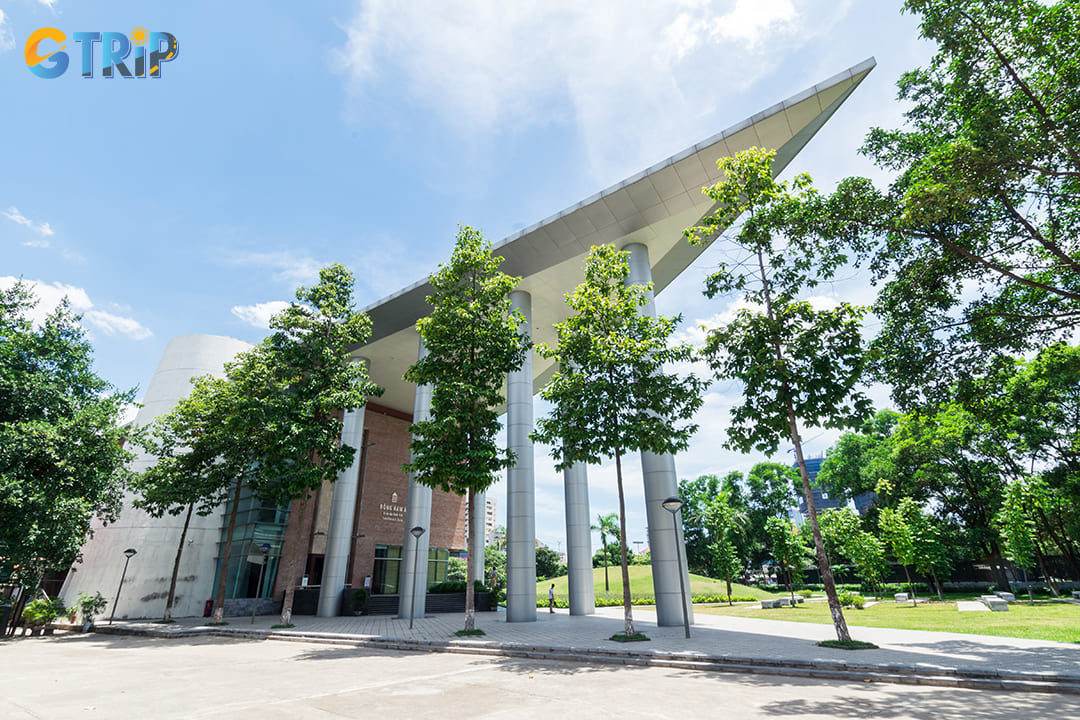
The Kite Building presents a striking architectural contrast with its modern design inspired by traditional Vietnamese kites
Architectural Garden
The outdoor Architectural Garden offers perhaps the most immersive experience at the museum, spanning approximately two hectares. Developed between 1998 and 2006, this open-air exhibition features full-scale reconstructions of traditional dwellings from various ethnic communities across Vietnam.
The garden showcases ten meticulously recreated folk architectural works, including:
| Ethnic group | House type | Notable features |
|---|---|---|
| Tay | Stilt house | Wooden structure raised on pillars with a thatched roof |
| Ede | Longhouse | Communal dwelling with extended roof and central gathering space |
| Bahnar | Rong house | Towering communal house with dramatic roof lines |
| Dao | Ground-level home | Earth floor dwelling with traditional wall construction |
| H'mong | Stone-walled house | Distinctive construction using local stone materials |
Each structure was built using traditional methods and materials, often with the participation of craftspeople from the respective ethnic communities. You can enter these houses to experience authentic spatial arrangements, traditional furniture, and cultural objects in their proper context. Walking paths wind through the garden, creating a village-like setting with native plants and regional architectural styles.
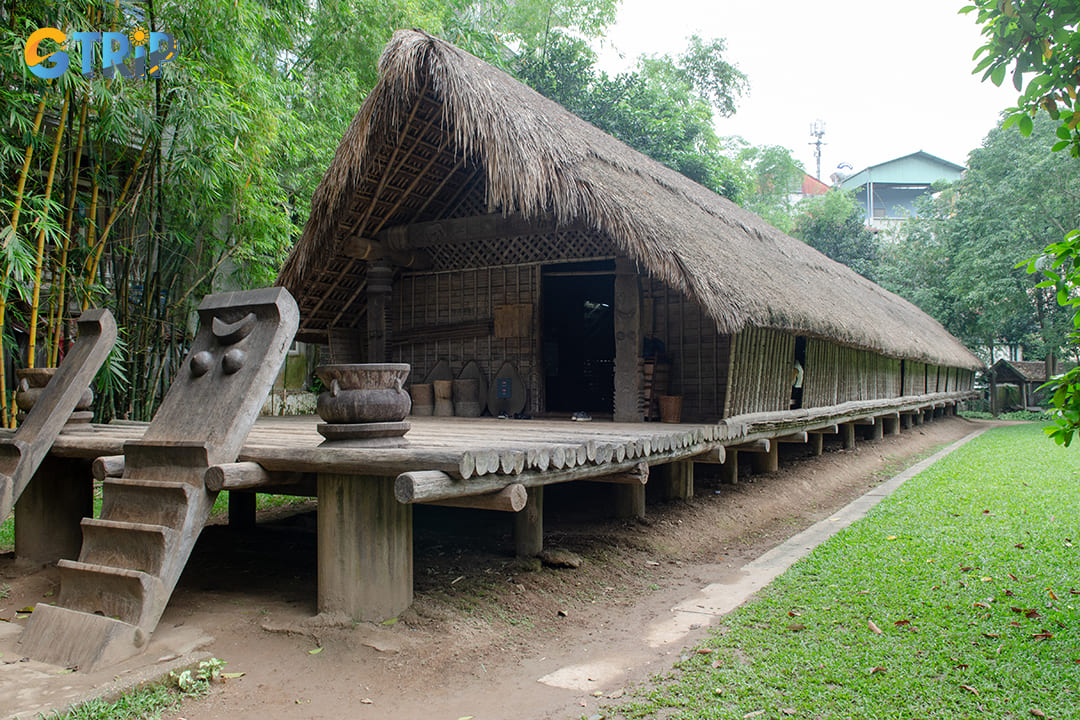
This open-air exhibition features full-scale reconstructions of traditional dwellings from various ethnic communities across Vietnam
The collection of the Vietnam Museum of Ethnology
The Vietnam Museum of Ethnology houses one of Southeast Asia's most comprehensive collections of cultural artifacts and multimedia resources. You can explore over 15,000 meticulously preserved artifacts representing all 54 ethnic groups that call Vietnam home. Each item tells a story of Vietnam's rich cultural tapestry, offering glimpses into traditions that span centuries of indigenous heritage.
The museum's impressive multimedia archive complements its physical collection, providing researchers and visitors with an in-depth cultural context. This digital treasure trove includes 42,000 photographs capturing daily life, celebrations, and traditional practices across Vietnam's diverse communities. Additionally, the archive contains 2,190 slides documenting cultural ceremonies. It also holds 237 invaluable audiotapes of traditional music and folk stories, along with 373 videotapes preserving rituals that might otherwise be lost to time.
Among the collection highlights, traditional clothing stands out for its intricate craftsmanship and cultural significance. Colorful H'mong embroidery, indigo-dyed Dao garments, and elaborate ceremonial costumes reveal the artistic sensibilities of different ethnic communities. These textiles showcase both everyday wear and special ceremonial attire that marks important life transitions.
The tools and implements section offers fascinating insights into traditional livelihoods across Vietnam. You can examine:
- Farming equipment from mountain terraces
- Fishing nets and traps from coastal communities
- Hunting weapons from forest-dwelling peoples
- Weaving looms and textile production tools
- Rice processing implements essential to Vietnam's agricultural heritage
Religious artifacts form another cornerstone of the museum's collection, reflecting Vietnam's complex spiritual landscape. Prayer wheels, spirit houses, ancestor altars, and shamanistic paraphernalia demonstrate how religious practices vary between different ethnic groups. These sacred objects provide windows into belief systems that blend animism, Buddhism, and indigenous spirituality.
Household objects provide intimate glimpses into daily life across Vietnam's diverse landscapes. Cooking vessels, storage containers, baskets, and furniture pieces demonstrate how communities adapt to different environments. These artifacts reveal ingenious solutions to everyday challenges, from water storage in arid regions to food preservation in tropical climates.
The ceremonial artifacts section showcases items used during life-cycle celebrations and community rituals. Wedding paraphernalia, funeral items, harvest festival decorations, and coming-of-age ceremony objects highlight how Vietnam's ethnic groups mark significant moments. These pieces often feature the finest craftsmanship, demonstrating the cultural importance of these pivotal life events.
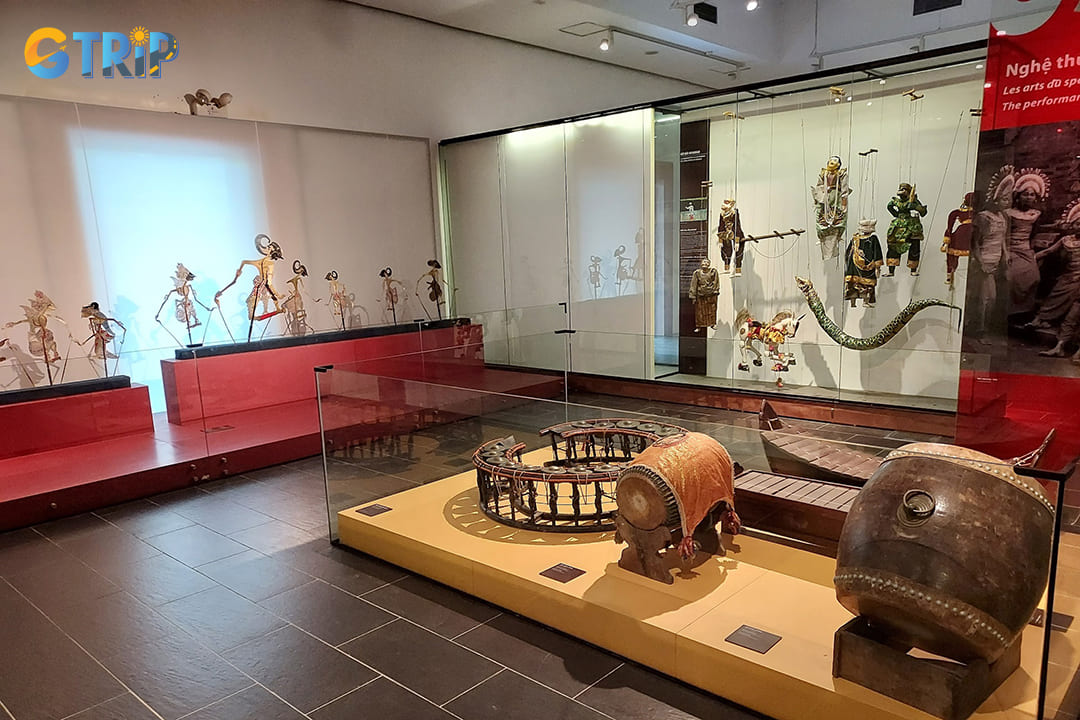
The Vietnam Museum of Ethnology houses one of Southeast Asia's most comprehensive collections of cultural artifacts and multimedia resources
3 things to do at the Vietnam Museum of Ethnology
The Vietnam Museum of Ethnology offers tourists an immersive cultural journey through interactive exhibitions, traditional performances, and educational activities.
1. Exploring the exhibitions of the Vietnam Museum of Ethnology
The museum's permanent exhibitions form the core of the tourist's experience, each housed in distinctively designed spaces. The Vietnam Ethnic Groups Exhibition in the Bronze Drum Building showcases the cultural diversity of the country's 54 ethnic communities through artifacts, photographs, and multimedia presentations. You can examine traditional clothing, household implements, musical instruments, and ceremonial objects that highlight the unique customs of each group.
The Outdoor Architectural Garden stands as one of the museum's most distinctive features, displaying full-scale replicas of traditional ethnic minority houses. You can enter and explore these meticulously reconstructed dwellings, from the towering stilt houses of the Ede and Bahnar to the communal longhouses of the Giarai people. Each structure has been built using authentic materials and traditional methods by craftspeople from the respective ethnic communities.
The Southeast Asian Cultures Exhibition in the Kite Building extends the cultural exploration beyond Vietnam's borders. This section features artifacts, clothing, and ceremonial objects from neighboring countries like Thailand, Indonesia, the Philippines, and Malaysia. It provides valuable comparative context for understanding regional cultural connections.
The museum organizes its collections across four distinct exhibition spaces:
- Introduction Hall: Provides an overview of Vietnam's ethnic diversity and the museum's mission
- Vietnam Ethnic Groups: Detailed displays of artifacts, tools, clothing, and cultural practices
- Southeast Asian Cultures: Contextualizes Vietnamese cultures within the broader regional mosaic
- Outdoor Architectural Garden: Full-sized traditional homes and structures from various ethnic groups
The museum regularly hosts temporary exhibitions focusing on specific aspects of Vietnamese culture. These special exhibits might spotlight traditional crafts, religious practices, or cultural exchanges with other Southeast Asian nations. Recent examples include exhibitions on traditional textiles, wedding customs, and shamanic practices. For remote access, the museum offers virtual exhibition tours on its website, allowing tourists to explore collections and exhibits from anywhere in the world.
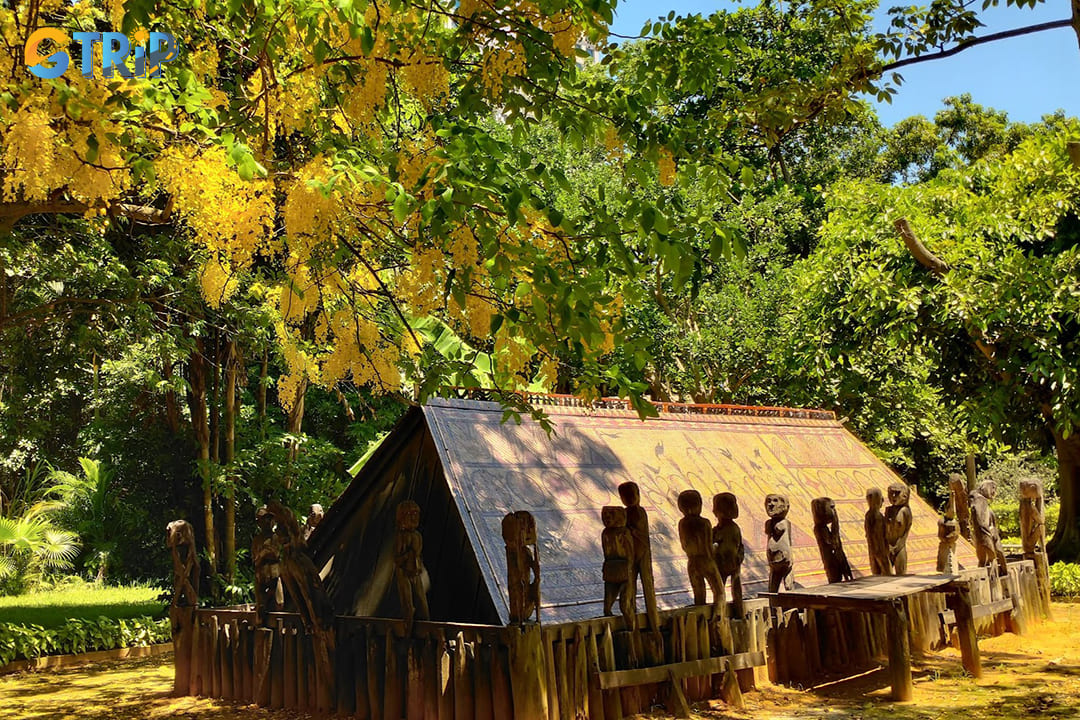
The Outdoor Architectural Garden stands as one of the museum's most distinctive features, displaying full-scale replicas of traditional ethnic minority houses
2. Watch water puppet performances on weekends
Water puppetry represents one of Vietnam's most distinctive traditional art forms, and the museum offers regular weekend performances of this enchanting cultural spectacle. The performances take place in a specially designed pool within the museum grounds, recreating the traditional rice paddy setting where this art form originated.
The puppets, made of lacquered wood and controlled by hidden puppeteers standing waist-deep in water behind a bamboo screen, enact folk tales and vignettes from rural Vietnamese life. Performances typically include scenes of farming, fishing, dragon dances, and legendary stories accompanied by live traditional music.
Ticket prices are 90,000 VND for adults and 70,000 VND for children, offering excellent value for this authentic cultural experience. Budget-conscious tourists should note that morning performances are free with regular museum admission, making them a particularly good value.

Water puppetry represents one of Vietnam's most distinctive traditional art forms, and the museum offers regular weekend performances of this enchanting cultural spectacle
3. Attend cultural events and performances
The museum hosts a vibrant calendar of seasonal cultural events and performances throughout the year, coinciding with important Vietnamese and ethnic minority festivals. These events offer tourists the opportunity to witness and sometimes participate in traditional celebrations, craft demonstrations, and performances.
During the Mid-Autumn Festival in September or October, the museum organizes lantern-making workshops, traditional moon cake demonstrations, and folk performances. The Lunar New Year celebrations include traditional games, calligraphy demonstrations, and special exhibitions highlighting holiday customs across different ethnic communities.
Other significant events include:
- International Children's Day celebrations with ethnic games and craft activities
- Craft demonstrations by artisans from various ethnic minority groups
- Traditional music concerts featuring instruments like the dan bau (monochord) and dan tranh (zither)
- Folk dance performances representing different regional traditions
- Cooking demonstrations of ethnic minority cuisines
- Seasonal agricultural rituals and harvest festivals
These events are typically included with regular admission, though some special performances may require separate tickets. The museum's website and social media channels announce upcoming events, and tourists should check the schedule when planning their visit.
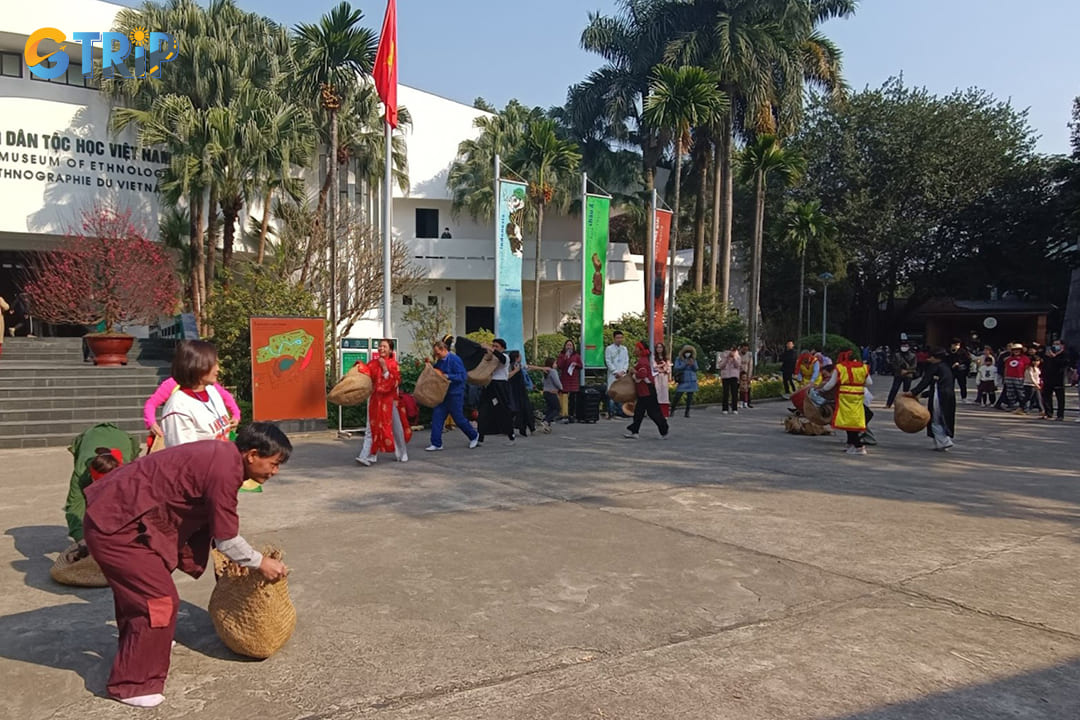
The museum hosts a vibrant calendar of seasonal cultural events and performances throughout the year
How to get to the Vietnam Museum of Ethnology?
Reaching the Vietnam Museum of Ethnology from downtown Hanoi is straightforward with several transportation options available to suit different preferences and budgets. Located about 8 kilometers from the city center in Cau Giay District, you can choose from taxis, public buses, private vehicles, or even bicycles to explore this cultural treasure.
By taxi or ride-hailing services
Taxis and ride-hailing apps provide the most convenient way to reach the Vietnam Museum of Ethnology, especially for first-time visitors to Hanoi. Simply open your preferred app or hail a taxi and specify "Bao tang Dan toc hoc Viet Nam" on Nguyen Van Huyen Street (not the smaller branch on Le Duan Street).
Popular ride-hailing options in Hanoi include: Grab, Be, Xanh SM, etc. A one-way journey from the Old Quarter or Hoan Kiem Lake area typically costs between 100,000-150,000 VND (approximately $4.30-$6.40). For budget travelers or solo adventurers, GrabBike offers motorcycle taxi services for around 40,000 VND ($1.70) per trip, providing both a cheaper alternative and an authentic local experience.
By bus
Hanoi’s budget-friendly public bus system offers easy access to the Vietnam Museum of Ethnology. It is a smart choice for cost-conscious travelers comfortable with public transportation.
Several bus routes stop near the museum. These include:
- Bus 14: From Dinh Tien Hoang Street near Hoan Kiem Lake, about a 600-meter walk to the museum
- Bus 07, 12, 13, 38: Depart from various central locations and stop nearby
- Each ride costs just 7,000 VND (around $0.30).
Bus 14 is especially convenient for tourists, departing regularly from the Hoan Kiem Lake area. After getting off at the Nghia Tan stop, it’s a short walk along Nguyen Van Huyen Street to the museum’s unique architectural complex. Though less direct than a taxi, buses offer a more immersive and budget-friendly experience.

Reaching the Vietnam Museum of Ethnology from downtown Hanoi is straightforward with several transportation options
By private vehicle
Renting a motorbike or car gives you the freedom to explore Hanoi at your own pace while visiting the museum. Nguyen Van Huyen Street in Cau Giay District is easily accessible via Google Maps or navigation apps, making the journey straightforward even for first-time visitors to the city.
Daily motorbike rentals in Hanoi typically cost between 200,000-250,000 VND ($8.50-$10.75), with numerous rental shops in the Old Quarter. Most hotels can also arrange rentals for guests. The museum provides convenient parking facilities for both cars and motorbikes, with fees ranging from 10,000-20,000 VND ($0.43-$0.85) depending on vehicle type.
When driving in Hanoi, be aware of the chaotic traffic patterns and always wear a helmet when riding a motorbike. The journey from central Hanoi to the museum takes approximately 20-30 minutes, depending on traffic conditions.
By bicycle
For eco-conscious travelers or those seeking physical activity, cycling to the Vietnam Museum of Ethnology offers a unique perspective on Hanoi's urban landscape. The approximately 8-kilometer journey from the Old Quarter takes 30-45 minutes, depending on your pace and familiarity with the route.
Many hostels and hotels offer bicycle rentals for around 100,000-150,000 VND ($4.30-$6.40) per day. The route to the museum passes through both busy urban streets and more residential areas, giving cyclists a broader view of daily life in Vietnam's capital.
Key considerations for cycling to the museum:
- Use Google Maps or download offline maps to navigate
- Consider wearing a mask due to air pollution in busy areas
- Secure your bicycle properly at the museum
- Carry plenty of water, especially during summer months
- Be prepared for Hanoi's occasionally extreme weather conditions
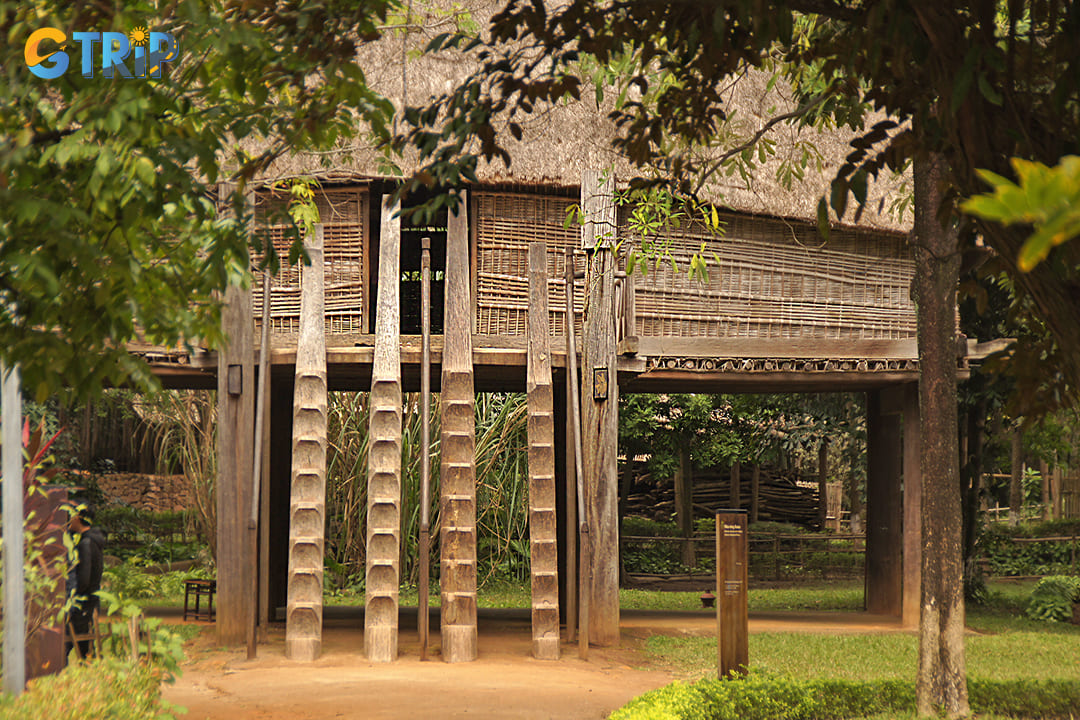
For eco-conscious travelers or those seeking physical activity, cycling to the Vietnam Museum of Ethnology offers a unique perspective on Hanoi's urban landscape
Important notes when visiting the Vietnamese Museum of Ethnology
To ensure a respectful and enriching visit to the Vietnam Museum of Ethnology, follow these key guidelines:
- Visit in small groups to navigate exhibits more comfortably and create a more personal connection with the displays.
- Consider hiring a museum guide for deeper insights into the customs, traditions, and artifacts of Vietnam’s ethnic groups.
- Avoid leaving money or valuables in the storage area. While lockers are available, it's safer to keep important items with you.
- Keep the museum clean by not littering. This helps preserve the venue’s condition and improves the experience for everyone.
- Stay quiet and avoid bringing food or drinks inside. A calm environment protects the exhibits and supports learning.
- Do not touch any artifacts unless permitted. Many items are fragile and centuries old, easily damaged by contact.
- Follow photography rules, especially in restricted areas or where flash is not allowed, to protect light-sensitive exhibits.
- Plan to spend at least 2-3 hours exploring both the indoor exhibits and the outdoor traditional houses for a full experience.

You should stay quiet and avoid bringing food or drinks inside
Nearby attractions from the Vietnam Museum of Ethnology
After exploring the cultural treasures of the Vietnam Museum of Ethnology, you can enhance your experience by visiting several fascinating attractions within walking distance. Here are two notable nearby destinations that can easily be incorporated into your museum visit itinerary.
Ha Temple (700 m)
Just a short 10-minute walk from the Vietnam Museum of Ethnology stands Ha Temple, a historical spiritual sanctuary that offers tourists a glimpse into Vietnamese religious traditions. Located at 86 Chua Ha Street in the Dich Vong Area of Cau Giay District, this temple represents an authentic piece of local heritage away from the more touristy spots in Hanoi.
The temple is dedicated to the worship of the goddess Lieu Hanh, one of the Four Immortals in Vietnamese folk religion. Its architecture showcases traditional Vietnamese temple design with ornate roof decorations, intricate wood carvings, and colorful ceramic details. The peaceful courtyard features ancient banyan trees that add to the temple's serene atmosphere.
Visitors to Ha Temple can experience:
- Local religious practices: Observe authentic worship rituals performed by Hanoi residents
- Architectural highlights: Admire the curved roof edges, dragon motifs, and ceremonial halls
- Cultural insights: Understand the connection between folk religion and daily Vietnamese life
- Photography opportunities: Capture traditional temple details without the crowds found at more famous sites
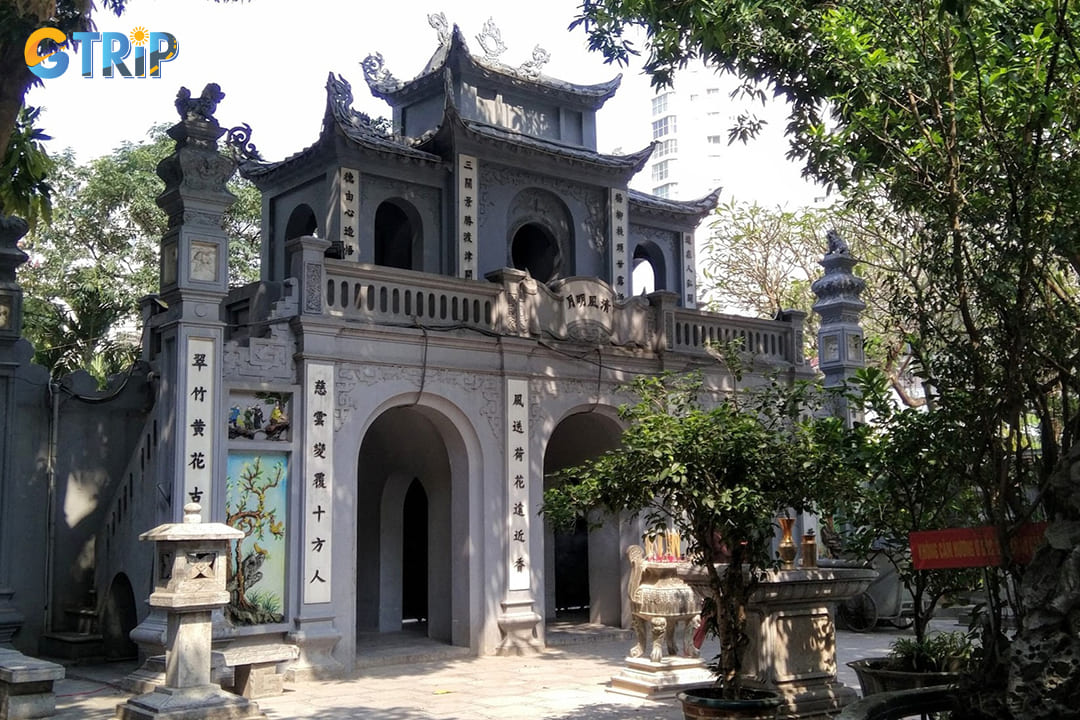
Ha Temple is a historical spiritual sanctuary that offers tourists a glimpse into Vietnamese religious traditions
To Huu Museum (700 m)
The To Huu Museum, situated approximately 700 meters from the museum at D9, Thang Long International Village, provides tourists with insights into one of Vietnam's most celebrated revolutionary poets. This lesser-known museum houses a collection dedicated to the life and works of To Huu (1920-2002), whose poetry played a significant role in Vietnam's revolutionary movement.
The museum exhibits To Huu's personal belongings, original manuscripts, and publications in a preserved setting that recreates aspects of his working environment. Photographs and biographical displays chronicle his journey from young revolutionary to one of Vietnam's most influential literary figures of the 20th century. The peaceful garden surrounding the museum offers a pleasant respite from city explorations.
What makes the To Huu Museum particularly interesting:
- Literary significance: Discover works that shaped Vietnamese revolutionary literature
- Historical context: Understand the connection between poetry and political movements
- Personal artifacts: View the poet's handwritten notes, personal library, and work space
- Architectural design: Observe the blend of traditional and modern Vietnamese architectural elements
For literary enthusiasts and those interested in Vietnam's cultural history, this museum provides valuable context to understand how art and literature influenced the nation's development. The museum's intimate setting allows for a more personal connection to Vietnamese cultural identity, complementing the broader ethnological perspective gained at the main museum.
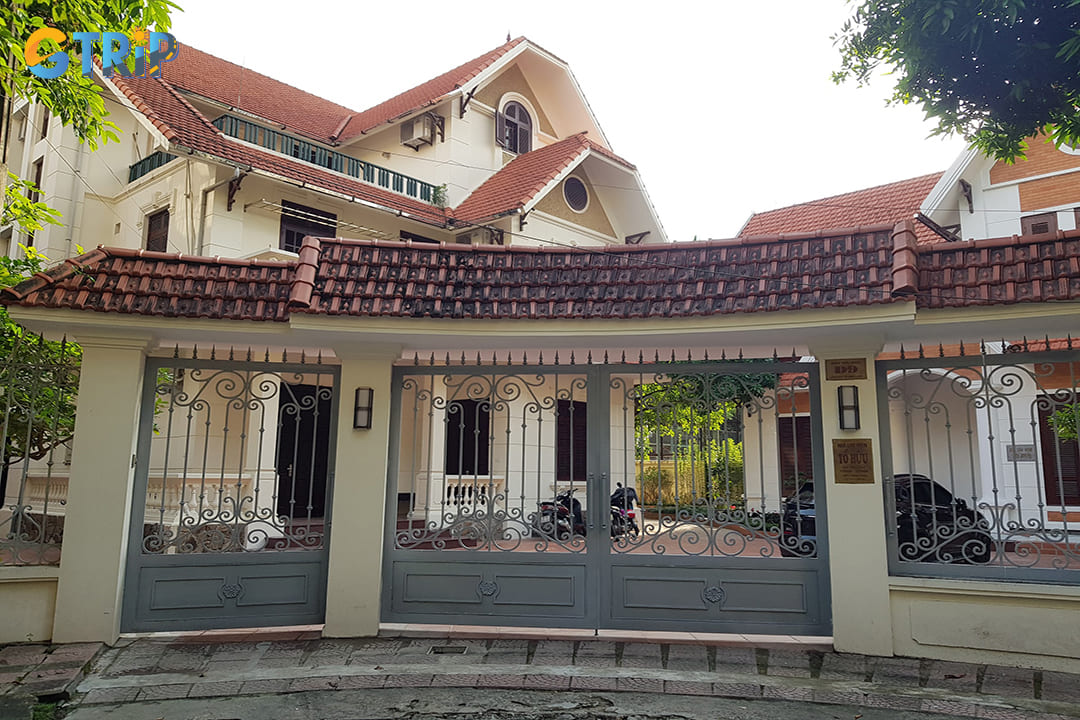
The museum exhibits To Huu's personal belongings, original manuscripts, and publications in a preserved setting that recreates aspects of his working environment
Visiting the Vietnam Museum of Ethnology offers a rich tapestry of cultural insights and an intimate glimpse into the diverse heritage that shapes this beautiful country. As you wander through its exhibits, each artifact tells a story, weaving together the traditions and histories of Vietnam's 54 ethnic groups. Such experiences deepen your appreciation for human diversity and enrich your travel journey with newfound knowledge and understanding. GTrip invites you to let this encounter spark further adventures, explore new destinations, or perhaps revisit these reflections through another lens elsewhere. If you are interested in this museum or any attractions in Hanoi, you can consider booking Hanoi tours of GTrip - Vietnam Travel Agency.

